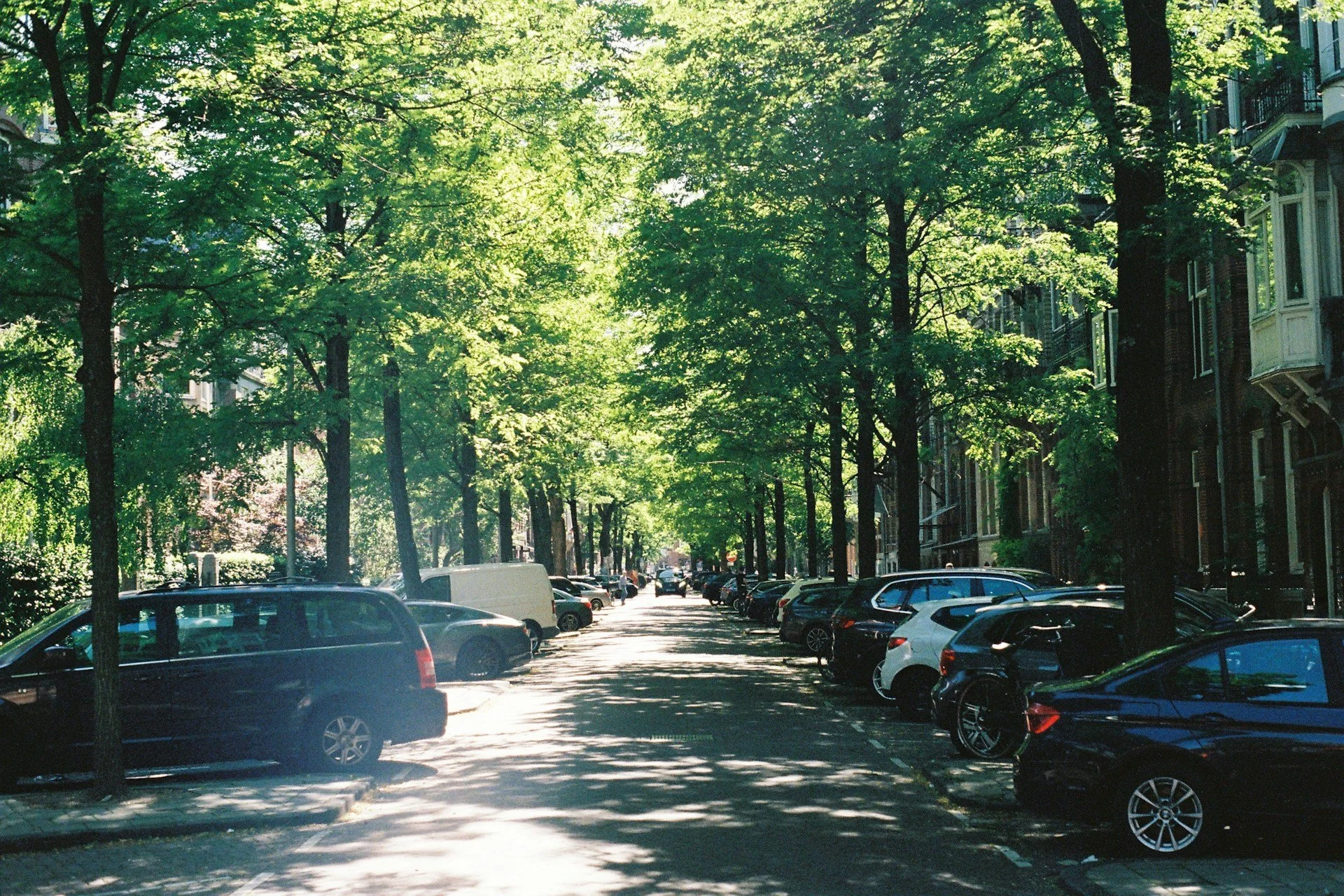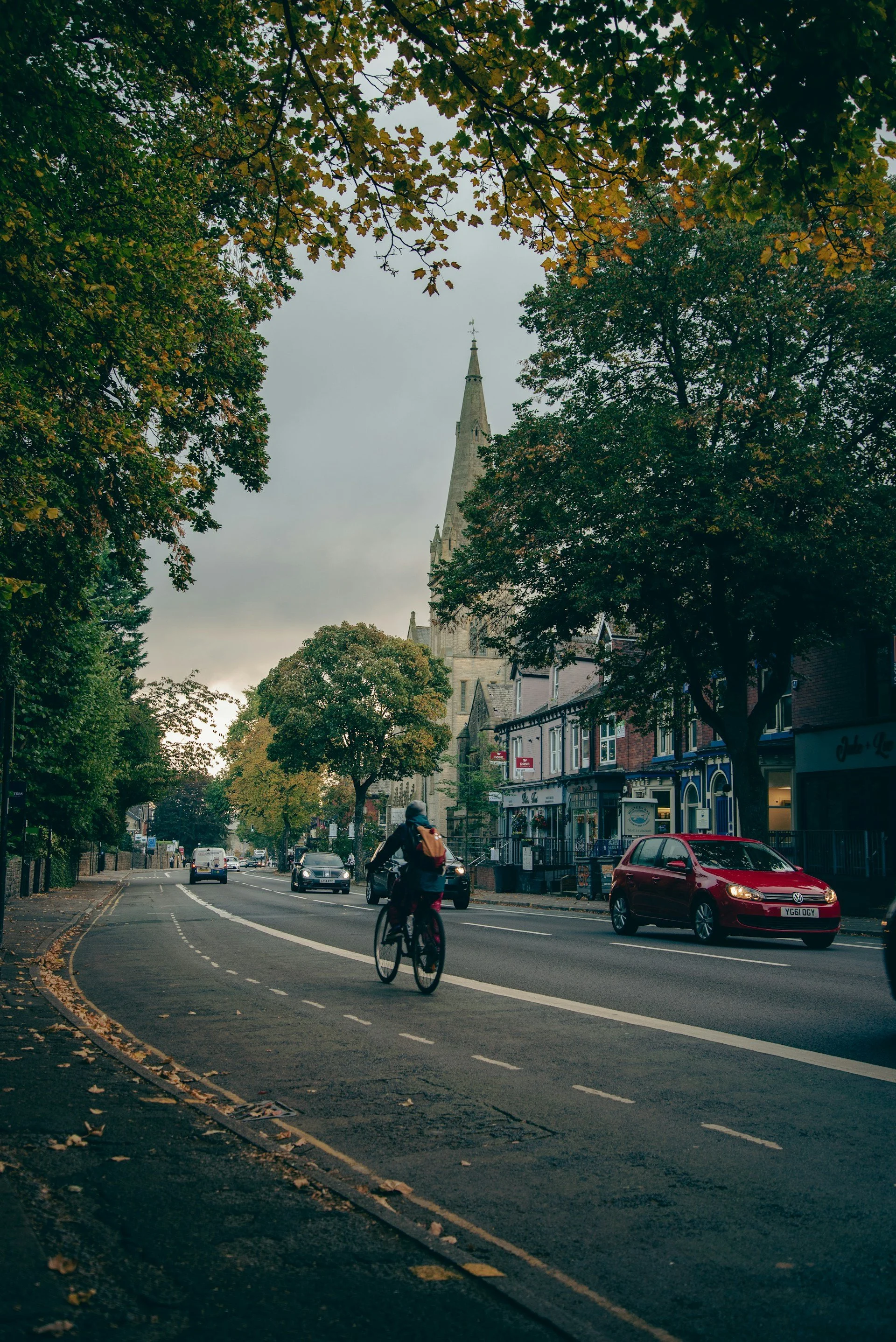Cities face unprecedented environmental challenges, and it’s no secret that trees offer multiple solutions: reducing urban temperatures, mitigating noise pollution, improving air quality, and supporting mental and physical health. So why then aren’t we planting trees wherever there’s opportunity?
As Biophilic Design practitioners, we can help hold this door open to help explain why we need them and how to do it. Sue James is the Convenor for the Trees and Design Action Group (TDAG), which brings together individuals, professionals, academics and organisations from wide ranging disciplines in both the public and private sectors to improve knowledge and good practice to support the role of urban trees through better collaboration in the planning, design, construction and management and maintenance of our urban places. We chat through the challenges, the opportunities and also how Biophilic Designers can get involved and help transform society, health and ultimately our planet.
One of the primary obstacles to widespread urban tree planting, according to Sue, is the perceived maintenance burden. Councils and developers often view trees as costly and complicated. However, TDAG research demonstrates that with strategic planning, tree maintenance can be minimal and cost-effective.
"If you plant the right tree in the right place, with proper initial care, maintenance becomes remarkably simple.” Do have a look at the practical guides TDAG have developed to help communities and professionals navigate tree planting challenges.
If you are wanting to share the benefits of urban trees, which extend far beyond environmental considerations, learn a bit more about how tree-lined streets can benefit society. For instance they increase property values, reduce urban temperatures by up to 4 degrees, potentially save the NHS money through improved public health and of course the obvious one, create more attractive, liveable and desirable urban spaces.
Grassroots Tree Planting Initiatives
Let’s also not forget the power of local people. There are many examples of community involvement, and you can find out about local tree planting groups across the UK who are already making significant impacts and get involved with, or support from them. These groups often achieve more successful plantings than official programmes because of their hands-on, passionate approach.
So what if you’re thinking about taking practical steps to support community action? Did you know that you are likely to have a local tree officer? Find out who your nearest one is. Explore community forest networks, engage with school parent-teacher associations, connect with organisations like Trees for Cities and of course use the online resources on TDAG and join their seminars which are free.
A crucial aspect of Sue and TDAG’s work involves education. Through her involvement with Teach the Future, she advocates integrating climate and nature studies across all school subjects, believing that informed younger generations can drive meaningful change.
Sue is also calling for comprehensive land use frameworks that integrate trees and green infrastructure into urban planning. She suggests local authorities should develop clear tree strategies that provide developers with consistent, achievable green space requirements.
As Sue says, “We need to bring people and nature together as partners, rather than antagonists.” Wouldn’t it be amazing if everyone of us reading this or listening to the interview, did something to change our local street, village or town. We planted a tree, got involved in the local tree planting groups or even better when we specified, we advocated for tree-lined boulevards and amazing arboreal environments. They don’t need to be perfect, manicured spaces but living, breathing urban environments where humans and nature coexist and mutually benefit.
Every individual, community group, and organisation has a role to play in creating greener, more resilient cities.
Resources like the Trees and Design Action Group's website offer free guides and inspiration. By sharing knowledge, challenging outdated perceptions, and taking practical steps, we can transform our urban landscapes.
To find out more visit TDAG (Tree Design Action Group) website: https://www.tdag.org.uk/
*Book your ticket to see Sue and TDAG at The Biophilic Design Conference www.biophilicdesignconference.com
The Biophilic Quality Matric (for building design) , University of Sydney - https://www.sciencedirect.com/science/article/pii/S266679162500003X
Edge Debate - debates and papers are here: www.edgedebate.com
Teach the Future is here - https://www.teachthefuture.uk/
Rockstrom and Tim Lenten - global tipping points 2025 -
https://global-tipping-points.org/?team=johan-rockstrom )
https://global-tipping-points.org/conference-2025/conference-statement/
The second guide in their two-part series on Canopy Cover is now available and free to download here. This guide outlines how canopy cover can be measured at a site scale and approaches that can be taken to project canopy spread over decades, which is useful in the planning context. http://epapers.bham.ac.uk/4397/
If you like this, please subscribe!
Have you got a copy of the Journal? You can now subscribe as a member of the Journal of Biophilic Design or purchase a gorgeous coffee table reference copy or PDF download of the Journal journalofbiophilicdesign.comor Amazon and Kindle.
Biophilic Design Conference www.biophilicdesignconference.com
Credits: with thanks to George Harvey Audio Production for the calming biophilic soundscape that backs all of our podcasts.
Listen to our podcast on Audible, Amazon Music, Spotify, iTunes, YouTube and all the RSS feeds.
https://www.facebook.com/journalofbiophilicdesign/
https://twitter.com/JofBiophilicDsn



